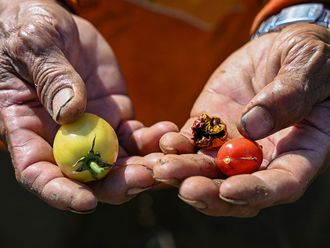
Manila The government has called on various agencies including non-government organisations and the International Labour Organisation (ILO) to help end by 75 per cent child labour practices in the Philippines by 2015, a senior official said.
“We have to meet the global deadline of ending the worst forms of child labour by 2016,” said Labour Secretary Rosalinda Baldoz.
The labour department’s National Child Labour Committee (NCLC) and the ILO called for the inclusion of child-labour related questions during surveys for the government to help get the real profile of worst forms of child labour (in the Philippines) as defined by ILO Convention 182, said Baldoz, adding, “These questions were not asked during surveys made from 1995 to 2001.”
The NCLC and the ILO proposed this plan when they drafted an inter-agency action for July 2012 to June 2016, said Baldoz, adding the ultimate aim is to institutionalise surveys on children and monitor child labour in unregulated sectors.
NCLC will be given a dedicated secretariat so that it can help enforce anti-child labour act and help the government address child labour problem, said Baldoz.
The government will also work with schools, said Baldoz, adding, “We found out that 69.5 per cent of 5.5 million child labourers still go to school. (Working for) their retention in school and bringing back to school the 30.5 per cent of the 5.5 million child workers require very focused and serious effort.’
Government and non-government agencies will provide livelihood assistance to parents found to have allowed their children to work, said Baldoz, adding the education department will also provide alternative mode of teaching to children found to have been forced to work.
With the help of non-government organisations, the Rescue Child Labourers (Movement), has been instrumental in the arrest of people abetting child labour, and the closure of establishments employing children, said Baldoz.
President Benigno Aquino created additional 372 labour inspectors to weed out child labour, said Baldoz, adding the government’s ambitious campaign will initially target 80 villages in 16 regions this year.
“While we strive to keep children in school and away from child labour, we need to ensure decent and productive work for parents and basic social protection for families,” said ILO Philippines Director Lawrence Jeff Johnson.
“We have to get to the root of child labour which is linked with poverty and lack of decent and productive work,” Johnson added.
There are 5.492 million working children aged 5-17, said the labour department in a survey done in October 2011, which used (for the first time) ILO’s framework to identify children at work.
Of this number, 2.993 million or 54.5 per cent are exposed to hazardous child labour; 2.46 million or 45 per cent are engaged in work that is not classified as child labour, the labour department’s survey said, adding that 3.028 or more than 50 per cent are considered child labourers.
Children from five to 17 years old who work at least one hour in the past 12 months are considered working children, the ILO framework said.
Child labour means children who work with conditions such as long working hours, exposure to chemicals and dangerous tools that may harm their health, morals, and safety, the ILO said.
The worst forms of child labour include all forms of slavery, such as trafficking, recruitment for armed conflict; prostitution and pornography, and illicit activities such as drug trafficking, the ILO added.












